The phone lines at Whyte’s on Molesworth Street have been hopping since the catalogue for its forthcoming Eclectic Collector sale was issued last week. With more than 400 calls – not including emails and walk-in inquires – it appears people have been scouring their attics in search of forgotten loose change and bank notes.
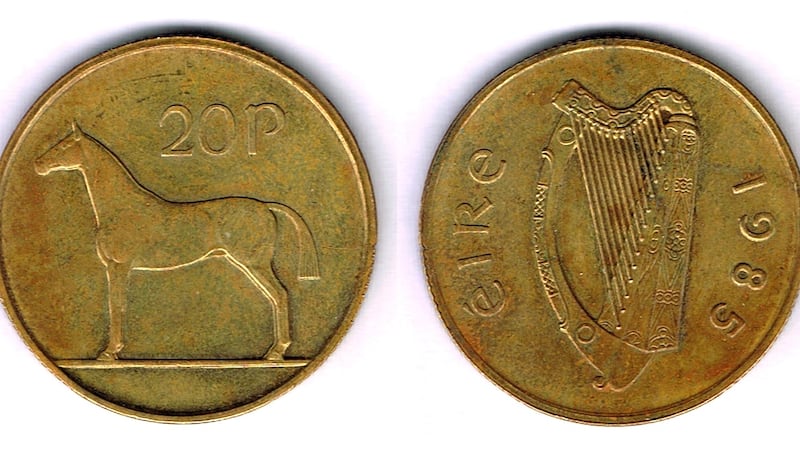
Causing the furore is lot 397, a 20 pence coin from 1985. Five hundred of these were issued in advance of general production, to calibrate vending machines and coin boxes, and all but 50 were returned to the Central Bank, making this one of the rarest Irish coins (€5,000-€6,000).
Some recent bank notes would also give a good return if found in the family coffers. Lot 516 is a European Central Bank issue for Ireland €500 note from 2002, with an estimate of €1,000-€1,200.
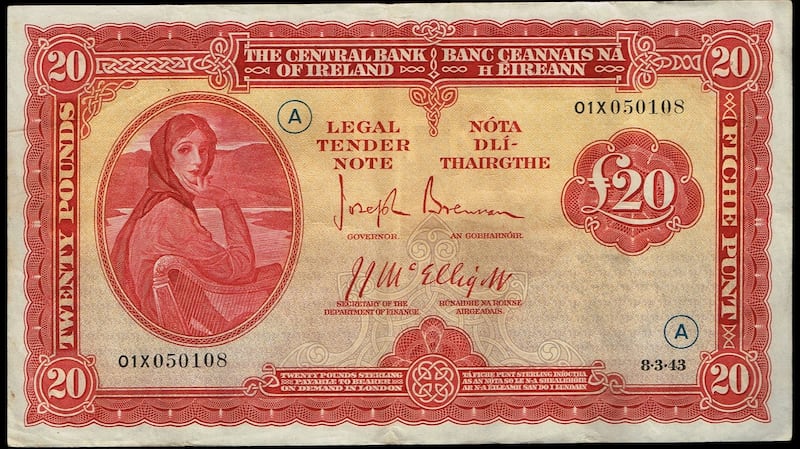
Lot 454 is a Lady Lavery War Code £20 note from 1943 (€5,000-€6,000). The war code was a special random overprint by the Central Bank to thwart forgers, particularly the Germans at the time.
The catalogue reads like a small compendium of Irish fighting history, featuring a diverse selection from Bronze Age weapons, a death mask of Robert Emmet, a fragment of a bomb dropped on Donore Avenue by the Germans in 1941, with a dollop of contemporary pop memorabilia for good measure.
Lot 592 is a 1994 Nirvana poster for a concert at the RDS (which had been cancelled in advance) on the same day as lead singer Kurt Cobain died in Seattle (€1,000-€1,500).
School magazines
Two school magazines from Mount Temple School, with contributions from students who went on to form Irish band U2 covering topics such as rugby and theatre feature (€600-€800), along with a photograph of a pensive and slightly smug looking lead singer Bono with his classmates in 1977 (€150-€200).

The history of the Anglo Irish Moore, Holroyd Smyth and Ponsonby families are catalogued in a vast set of archives in the form of diaries, photographs and letters, including those from George Bernard Shaw and Oliver St John Gogarty.
Most interesting is lot 203: correspondence between Alice Holroyd Smyth and interned republican prisoners from 1923. The amicable relationships portrayed in these letters suggest that the reason her home – Ballynatray estate – survived being razed to the ground by the IRA, unlike other Anglo Irish estates at the time, was due to their friendship with Alice, who sympathised with their cause (€2,000-€3,000).
Lot 85 will interest collectors with a penchant for telecommunications; it is a mounted section of the original transatlantic cable laid between Valentia Island in Co Kerry and Newfoundland in 1865.
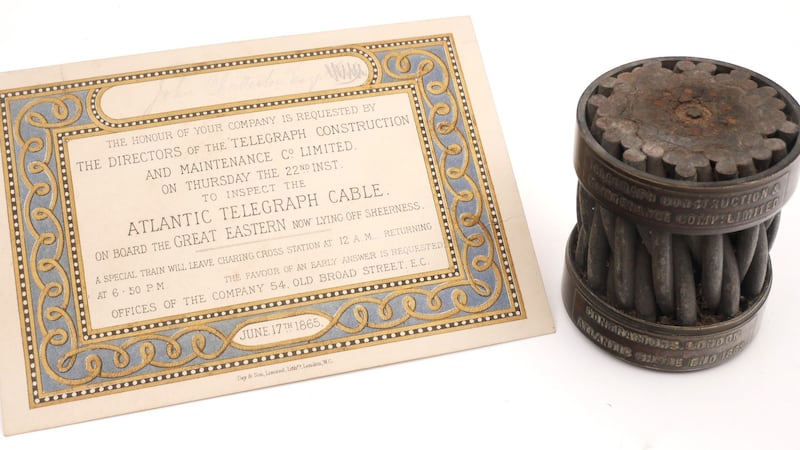
The cable changed the course of history, reducing the time a message took between North American and Europe, from 10 days to a matter of minutes. This cable replaced the first attempt which lasted only three weeks due to extreme voltages applied to the wires (€400-€600).
Weaponry
There is an array of weaponry tracing the course of Irish history from Bronze Age axe heads to a wrought iron pike – a type used by the United Irishmen in 1798. Also featured are weapons and memorabilia from the 1916 rising, including rifles and bayonets from the Howth Gun Running, and contemporary decommissioned weapons from the recent Northern Ireland conflict.
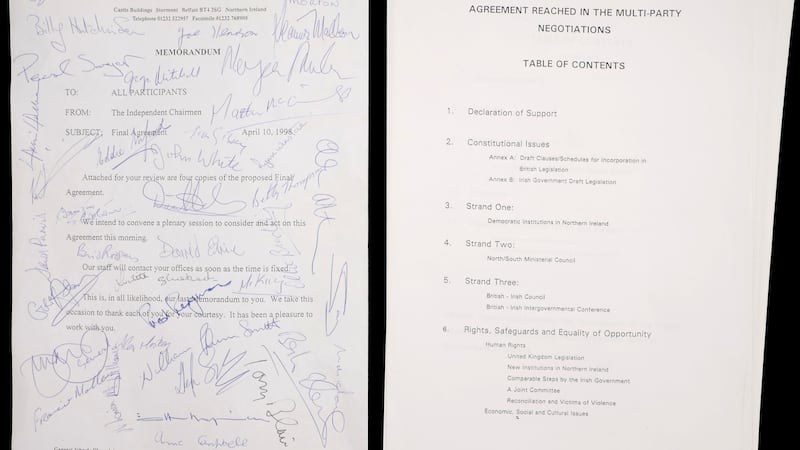
While these weapons have, over the past couple of weeks, invoked criticism, they are part of Irish history. Pain and emotions from the Troubles are still raw, and indeed these wounds and fears have been sliced open with the uncertainty of the Border due to Brexit.
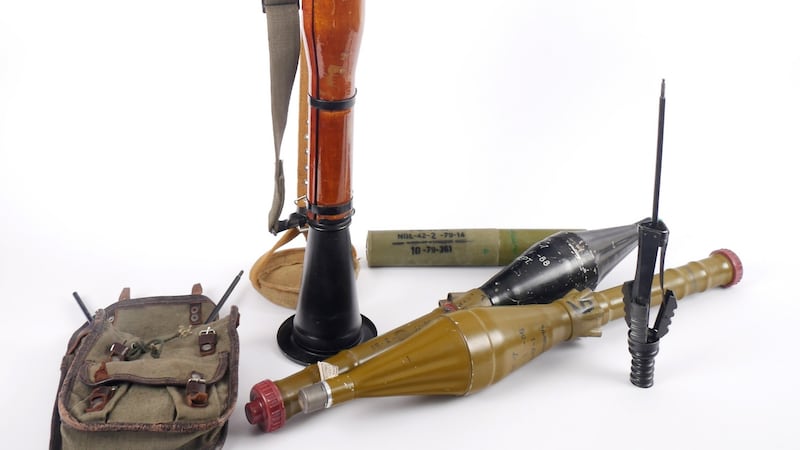
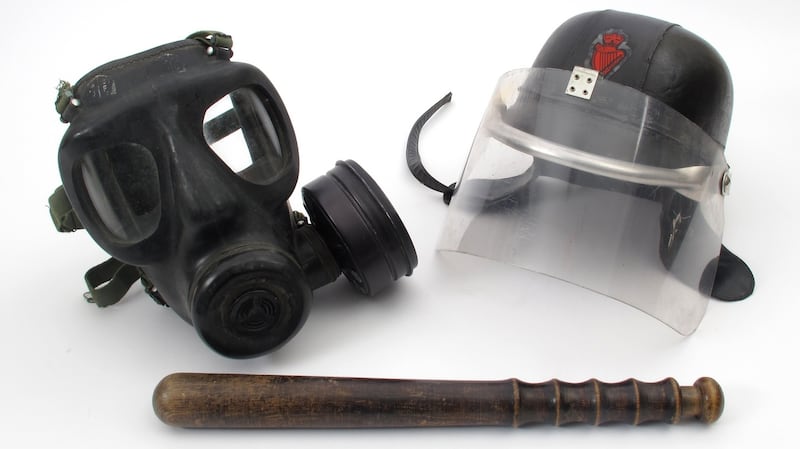
The rocket launcher, rifles and RUC riot gear featured in the sale deserve to be in a museum, so future generations can comprehend the historic significance and importance of lot 261: an original final draft of the Belfast (Good Friday) Agreement, signed by 44 participants from all sides, ending 30 years of bitter conflict in Northern Ireland (€5,000-€7,000).













